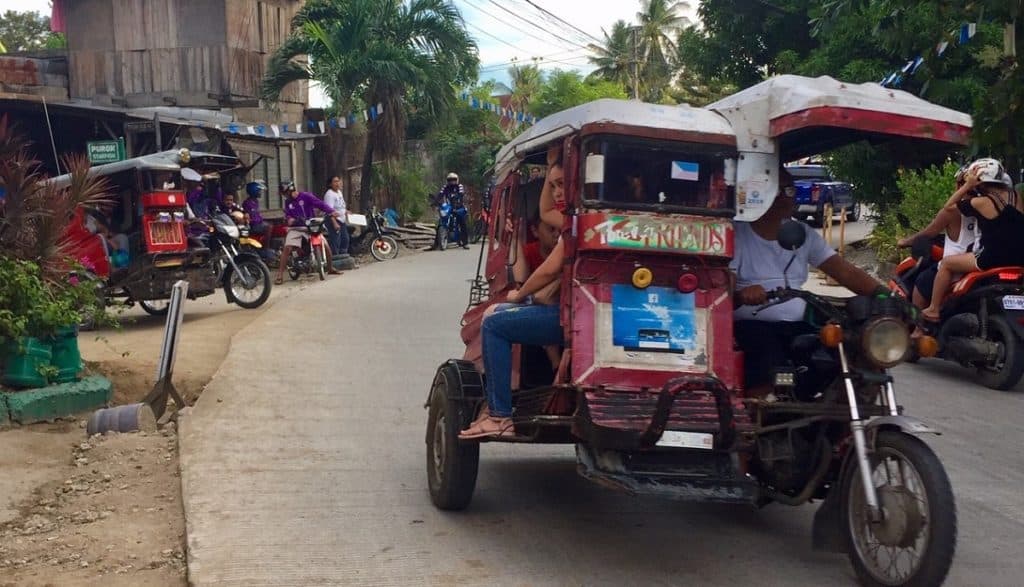Last Updated on October 28, 2024 by Ellen
I’m fascinated by our latest stop on the world travel tour. We are living in the Philippines.
At any given time during the year, 350,000 Americans are vacationing or living in the Philippines, according to the U.S. State Department. We are lucky to be in that group as retired budget travelers.
The Philippines has a large number of American retirees and U.S. veterans. There were U.S. military bases in the Southeast Asian nation for nearly 100 years – ending in 1992. Digital nomads set up shop on the country’s fabulous beaches. You’ve probably seen idyllic pictures of white sandy-bottom, clear seas, next to lush jungle on soaring mountaintops.
Well, we are nowhere near those well-known, beautiful tourist destinations. Not yet anyway. As I write this we are in a place called Liloan, on Cebu Island, about a 45 minute drive from Cebu City — when there’s no traffic. There is a lot of poverty here. Many kids are too-thin, and ask us for money. I wish I had bundles to give them. Gumballs in my bag will have to suffice.
We stayed in metro Cebu for a few days when we first arrived. I stayed inside our rental and didn’t do much. I’m recovering from broken ribs that I probably aggravated on recent boating, snorkeling, touring, hiking adventures in Komodo National Park and on Penida Island. While I rested, Tedly went out to explore. He reported back the place reminded him of parts of Guatemala. On a short walk around the neighborhood of that rental, I saw what he meant: poverty was everywhere.
After a few nights, it was time for us to move to our extended rental in Liloan — away from the big city, but close enough to return on visits. Most of our time is spent in Liloan. And there is a lot of poverty here, too.
Think of Liloan as a Philippine-style suburb to the big city. It’s a working class area. Taxis are motorcycles with large side cars made from whatever is available, in some cases.
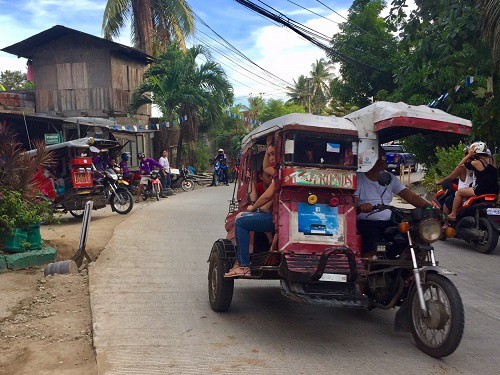
There are two big landmarks in Liloan: a lighthouse and a church.
The church is a gorgeous old building. It’s the pride of the town in a country that is an estimated 80 percent Catholic. There are three masses each day, and sometimes it’s crowded, unlike other places around Southeast Asia.
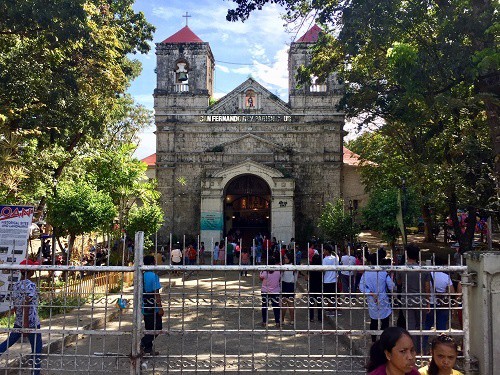
San Fernando El Rey Parish was built in 1847 and named after the saint who recaptured Spain from the Moors. It’s the only church on Cebu Island that faces west. No one knows why, though some guess it’s because morning mass would be cooler. Tedly has been to mass there, and one day at noon, bats were parked on the high walls, and flying around right under the ceiling.
People cross themselves when the walk or drive by the church. I see a lot of Mary and Jesus statues and art in ‘taxis’ and doorways. It’s clear we have left behind the Hindus in Bali and Nusa Penida, the Buddhists in Thailand, the Muslims in Malaysia. We are back in Christendom. It’s a bit jarring after a year away from it.
After the Spanish-American war, Spain gave the Philippine islands to the U.S., and the governor general ordered the lighthouse built on Cebu Island. That order came from William Howard Taft – who later would be U.S. president. Eventually America recognized the Philippines as a sovereign nation in 1946. The U.S. and the Philippines celebrate July 4 as their independence days. That lighthouse is Liloan’s only other claim to fame, besides the church.
There’s a discount shopping mall, a grocery store, endless bodega-style stores in neighborhoods and chickens roasted on street after street. These chickens are something you’ll see living in the Philippines. It definitely feels foreign, and yet, at the same time, it feels the same as anywhere else.
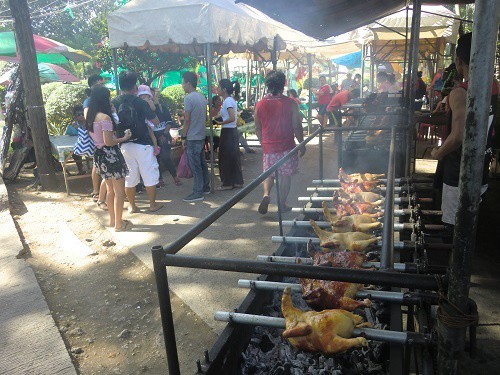
Other similarities between here and the U.S., in addition to the Independence Day date: the Philippines is a democracy (Asia’s oldest one); there is a Christian majority; the country has a drug problem; there is stark proof of class division – the haves and the have nots.
There are slums on the island, and yet places like Ayala Mall are cleverly designed to shield shoppers and diners from other people’s hardships. From the center courtyard, you cannot see the shanties, the dirty, too-thin children, or the jeepneys packed with people who are “poor” by western standards, but are considered wealthy here because they can afford 20, 30, 40-cent fares.
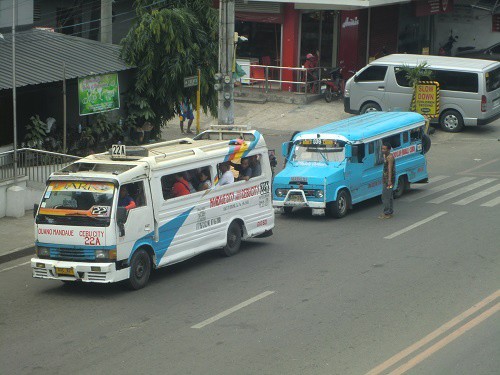
The malls are decorated for Christmas. Deck the halls with retail pitches, falalalala, blablablabla.
As a traveler to the more local scene, we get to enjoy stuff like this: a bunch of enterprising kids with instruments playing holiday music at our door for donations on a random afternoon. You’ll never see that in the Southeast Asian countries that are not predominantly Christian.
We have the nicest home in the neighborhood. Strong air conditioning, fast WiFi, Netflix, balcony, fans, new fridge, running water, drinking water, comfortable bed. I’m so freakin’ lucky to have all that. Other nearby homes are what Americans would call “shacks.”
Like so many other poor communities, there is a stray dog problem. Packs roam and follow the females. Mange and mites make skin pink on many dogs. Litter is around. Roads are dusty; some driveways aren’t paved. Some homes don’t have glass in the windows or doors on the frames. These are facts of life living in the Philippines — these are things you will see if you aren’t in a resort compound for tourists.
As sad as it is to see dogs suffer, it bothers me more to see kids and elderly hurting. Sadly, it’s another fact of life living in the Philippines — and so many other countries, including my own.


It’s not all poverty and drudgery in Liloan. It’s a mix of income levels, like anywhere else. The people we’ve spoken with so far are kind and helpful, and they seem glad we travelers have taken an interest in their home.
You might be saying, ‘Wait! Why aren’t you on those white sandy beaches or those lush mountaintops?’ And my answer is: we will be. But not all of our days living in the Philippines will look like pages of a travel magazine, or Instagram posts.
It’s times like these, in places like these, that I’m reminded to stay humble and teachable. Here is where we will be for a while, and I’m happy about that.

